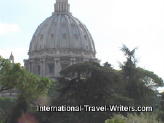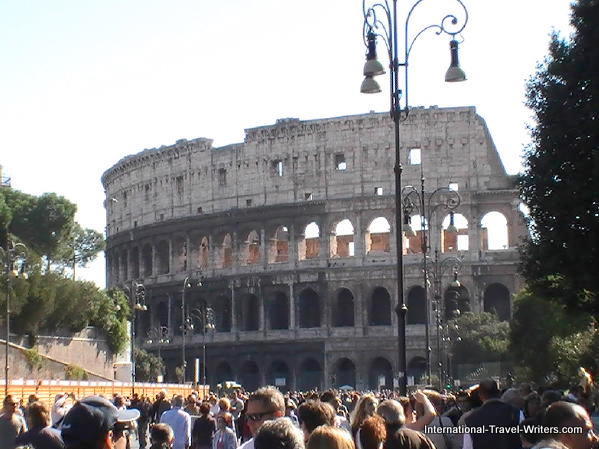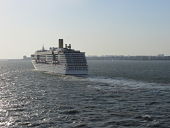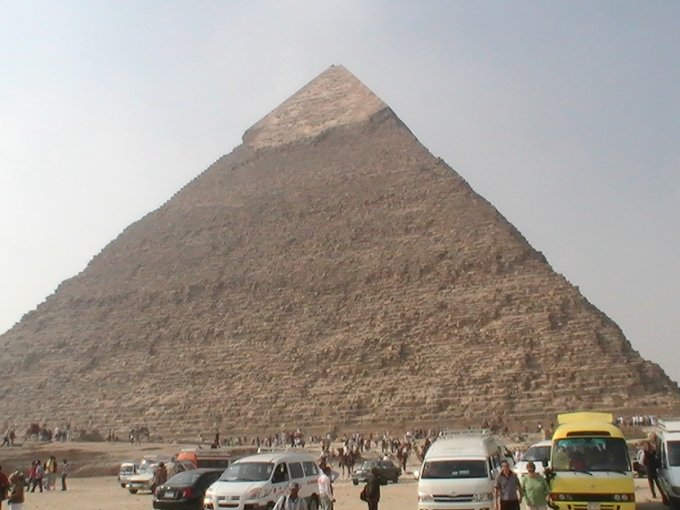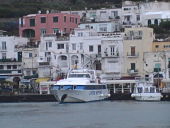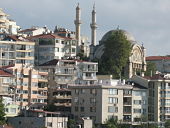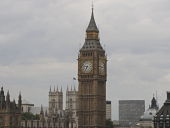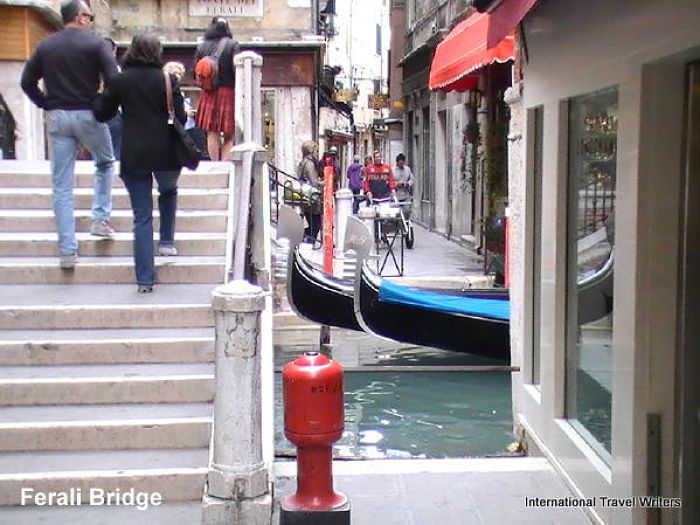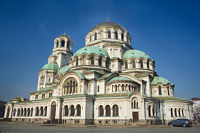The Vatican

The Vatican is in Vatican City, which is nestled across the Tiber River west of Rome’s vibrant center, and is actually the smallest State in the world… guaranteed by the Lateran Treaty of 1929 worked out with Mussolini. In spite of being the smallest State, it has the largest, as well as most breath-taking, treasure trove of magnificent works of art. Sculptures, bronzes, paintings, tapestries, mosaics, ceramics, ancient artifacts such as pottery… all are contained in its 13 Museums which have 54 galleries within.
The restored Michelangelo’s Sistine Chapel, the Vatican Gardens
and Courtyards add to the enchantment of this State that is totally
surrounded by Rome. The first papal palace built on the current site was
constructed by Pope Eugenius III (1145-53), was fortified by Innocent
III in 1208 and in 1378 became the primary papal residence. Bit by bit
over the centuries, successive popes continued the expansion resulting
in the huge complex of palaces and museums that exist today.

Rows upon rows of chairs are kept ready for the next papal/public event.

The Vatican Sphere seen in the photo is called “Sphere within a Sphere” and was created by the Italian, Arnaldo Pomodoro. He was born in 1926 and continues to work in Milan. The meaning is supposed to be that the Inner ball is Earth and the Outer ball is Christianity but like a lot of art, you can interpret in your own way.
Versions of the spheres are not only at the Vatican Museums but also at Trinity College in Dublin, the Hirshhorn Museum in Washington, D.C., Christian Trinity Seminary in Indianapolis, Pesaro in Italy, Tehran Museum of Contemporary Art, the de Young Museum in San Francisco and the University of California, Berkeley.

This is a closer look at the "Sphere within Sphere" piece of art by Arnaldo Pomodora that sits outside the Vatican Museums.

The Courtyard of the Pigna (pinecone) is named after the huge bronze pinecone which is around 13 feet high and sits prominently atop the staircase designed by Michelangelo. It was found in the Middle Ages at the Baths of Agrippa. It was believed to have formerly been at the nearby Temple of Isis where it was part of a fountain with water flowing from its tips.
In ancient times it stood near the Pantheon. It is believed that it was moved to the atrium of the ancient St. Peter Basilca during the middle ages and then moved to this location in 1608. Two peacocks, copies of those in the Braccio Nuovo, sit on each side of the pinecone. Nearby is the Sphere seen above.
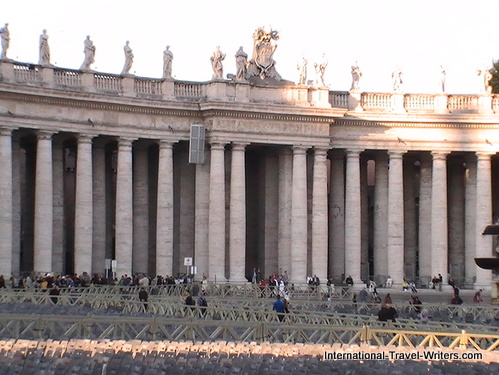
Carlo Maderno completed his design of the façade in 1614. It is approx. 375 feet wide and 157 feet high. It has Corinthian columns and pilaster. It is topped by a balustrade with thirteen statues ( each is approx. 18 feet high). There is an inscription plate that commemorates the building of the façade was during the pontificate of Pope Paul V Borghese (1605-1621).
In the lower section there are 5 entrances to the atrium topped by 9 windows. Three of those 9 have a balcony. The central window is nicknamed the "Benediction Loggia. This is where the pope five his first blessing to the city and world when he's elected and then he repeats blessings again during Christmas and Easter each year.

Moderno also designed a fountain to complement the outer appearance of his gorgeous façade design.

Bernini designed and built St. Peter's Square between 1656 and 1667. This was under the pontificate of Alexander VII (1655-1667). It was a spacious design with buildings that surrounded and enclosed in the square. In 1950, with the new and very wide street leading to the Vatican finally opened, it magnified not only the Dome of the Basilica but the surrounding 284 columns that were set out in rows of 4 along with 88 pilasters amplified the view to appear even greater than its original intent.
Somewhere around 1670, Bernini's pupils built 140 statues of saints approx. 10 feet high, that lined the balustrade above the columns. To further enhance St. Peter's Square, two great fountains were built by Bernini (1675) to complement the Obelisk and Fountain of Maderno (1614). At the foot of the staircase in front of the Basilica are the statues of Saint Peter and Saint Paul...gesturing a welcome.

There is a Royal Staircase that links the Square to the Vatican Palaces built between 1662 and 1666. Another item of interest is near the entrance to the Basilica where you will see some of the famous Swiss Guards. The Swiss Guards have been a tradition since 1506. Pope Julius II invited Helvetian soldiers to join the rather small Vatican army.
In 1527, on May 26th, (still the same day the Guards take their oaths), these Swiss Guards protected Pope Clement VII during his escape to Castel Sant'Angelo. 147 of the Guards protecting him gave their lives with only 42 surviving. Loving historical tradition this struck us as an apt utilization of bringing the present habits forward...to honor the past.

There is a Gallery of Maps leading toward the Sistine Chapel. Shown above is the ceiling in the gallery that is a work of art all by itself. The Vatican name of Gallery of Maps is from the 40 frescoes that are real maps that show the Italian regions and the Papal properties at the time of Pope Gregory XIII (1572-1585).
They are amazingly accurate considering they had no way of being in the air to film the topography. They were painted between 1580 and 1585 based on drawings by a friar and geographer, Ignazio Danti. He took 3 years to do these 40 maps basically covering the whole of Italy as it was known at that time. It is phenomenal how accurate these frescoes are of Venice and other areas.

The Vatican Palace was not built as a residence. Although a small portion of the palace is residential, the remainder serves the purposes of art or is used as administrative offices for the business of the church and for palace management. The rooms formally intended specifically for residence are today used to accommodate collections or as halls of state. The current residential section is around the Cortile di San Damaso. It includes the quarters of the Swiss Guards and the gendarmes.
There are
approximately 1000 rooms in the entire palace and only about 200 are
used as residential apartments for the Pope, the Secretary of State, the
highest court officials, the high officials in close attendance on the
Pope, and some scientific and administrative officials. Pius X built a
special large residence in the vicinity of the Vatican that houses a
large number of the minor officials and servants of the Quirinal Palace.

The residential section of the Pope is in the eastern wing facing towards Rome. On the upper floor (the third) he lives with his two private secretaries and some servants; on the second floor he works and receives visitors. The second floor includes the reception rooms, which the visitor enters through the Sala Clementina.
A division of Swiss Guards keep watch at the entrance to the papal apartments. The next room is the Anticamera Bassa. This is where the servants stand and where visitors to the Pope leave their coats. There is a second waiting room called the Anticamera Segreta and this is where the cardinals and persons of rank and station await being received. Others summoned to see the Pope wait in the throne room or in either of the two rooms listed above.
Pope Pius XI authorized excavations beneath the Vatican in 1940. He wanted to be buried closer to the tomb and bones of St. Peter. The bones, purported to be St. Peter's, rest in a stone cavity behind very thick plexiglass. To tour this area, you must apply six months in advance of your visit, give your passport details and then wait. Not everyone is approved but it is worth the wait in order to see the "Scavi".
Having trouble finding what you need? International Travel Writers Index and Map
OR
Do you have a travel experience or story to share? Share your travels here!
Related Articles......
Return from Vatican Museums to International Travel Writers Homepage
By Carolynne Woods, © Copyright 2010-2020. International Travel Writers.com All rights reserved images and text
